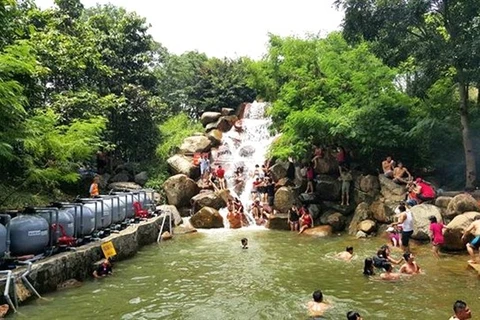HCM City (VNA) - The Ministry of Construction said on January 23 that its adjusted construction master plan for the Ho Chi Minh City Zone to 2030 with a vision to 2050 had been approved by the Government last month.
“With the official announcement, we hope that all eight provinces in the HCM City Zone will publicly announce the construction master plan and invite stakeholders to take part in the implementation process,” Deputy Minister of Construction Phan My Linh said.
“Based on the construction master plan, localities should adjust their regional and provincial master plan,” she said. “Related ministries and industries should mobilise resources to support localities in carrying out the master plan, especially in promoting satellite urban regions and industrial parks with clean, green and modern technologies.”
Tran Vinh Tuyen, Vice Chairman of the HCM City People’s Committee, said: “The official launch of the construction master plan has helped HCM City cope with challenges related to infrastructure development, and closely link with neighbouring provinces in the region to ensure quick and stable development.”
Under the master plan, the HCM City Zone includes the administrative boundary of the city and neighbouring provinces of Ba Ria -Vung Tau, Binh Duong, Binh Phuoc, Tay Ninh, Long An, Dong Nai and Tien Giang, covering a total area of about 30,404 sq.km.
The zone would expand towards the east and northeast in a compact urban model.
By 2030, the zone is expected to have a population of 24-25 million, including 18-19 million people in urban areas and 6-7 million people in rural areas, with an urbanisation rate of 70-75 percent.
HCM City, which is the country’s largest economic centre, is expected to be a nuclear urban area and connect to and support other urban areas in the zone.
The plan targets developing the zone into a major Southeast Asian centre for culture, education and training, science and technology, and healthcare.
The plan calls for the city to be an international trading centre and a hub to link economic zones and key economic zones in the South, the Cuu Long (Mekong) Delta, the Tay Nguyen (Central Highlands) region and the south-central coastal region.
In developing the zone’s transport system, the plan focuses on completing expressways and belt road systems.
By 2030, new expressways, including Bien Hoa – Vung Tau, HCM City – Thu Dau Mot – Chon Thanh, HCM City – Moc Bai, and Dau Giay – Da Lat, will be built.
By that time, the city’s Belt Road No. 3 is expected to be operational, while construction of the Belt Road No. 4 will begin.
New railway routes, including Trang Bom – Sai Gon Railway Station, Bien Hoa – Vung Tau, HCM City – My Tho – Can Tho, HCM City – Tay Ninh, will also be built.-VNA
VNA
























